Best Sheet Music download from our Library.
Jazz Freedom
There is a maxim about free jazz that says, “You can play anything, but you can’t play just anything.” This expresses, in the form of a contradiction, the opposition between freedom and responsibility in jazz improvisation.
The first part of the saying, “You can play anything,” declares the improviser’s negative freedom to not have to play what a composer requires. The second part of the saying, “But you can’t play just any-thing,” means that it is positive freedom and an affirmative purpose that fully realizes the opportunity for which negative freedom sets the foundation.
The saying states, in other words, that one should not do something merely for the sake of doing it, and that there is responsibility associated with one’s freedom. An improviser can meet the responsibility to not play anything just to play it if he or she plays what is authentic and honest as determined by the particulars of the musician’s individual character and personality.
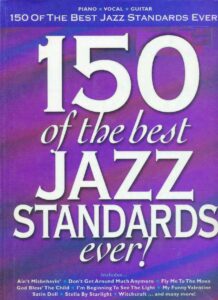
Not playing something just to play it is a higher-level proscription about the purpose of one’s freedom, a proscription about the manner in which one is not proscribed, a statement about the responsibility of one’s freedom.
The improviser can thereby express both freedom and responsibility. As an example, consider the musical technique of banging both hands on the keyboard of a piano. There are times in which such a technique may be responsible, and times in which it may not be appropriate. For instance, Michael Brecker composed a piece called “Nothing Personal” in which one note is notated as an undefined pitch.
One might argue that playing something in an improvisation for no purpose—just to do it—is a purpose itself: a meta-purpose, or a purpose attached to a lack of purpose. This is similar to saying, “Moderation in all things, including moderation.”
This allows for immoderate things, because if moderation is done in moderation, then occasionally some actions will not be moderate. If one always improvises with a purpose, then, sometimes, one’s purpose might be to have no purpose. Sometimes it might be OK to do something just for the heck of it, but we cannot say that doing so was an expression of responsibility, even if it was acceptable in a larger sense. The meta-purpose of having no purpose may be a legitimate part of jazz, but it does not express responsibility.
There is another way in which responsibility coexists with freedom. A choice is always subject to evaluation, and this means that, except for a perfect improviser (who does not exist), some choices will be evaluated as less worthy than others. Therefore, freedom is not always devoid of costs: stated as a contradiction, freedom is not necessarily free.
If one is merely choosing between vanilla and chocolate ice cream, there is no significant cost to that choice, but if we appreciate some improvisations because they are clever, fascinating, humorous, or inspiring, we must also be ready to reject some improvisations because they are plain, uninteresting, or boring.
Unless one suggests absolutely no standards, and even if such standards as cleverness, fascination, humor, or inspiration may be intersubjectively determined by the audience and the musicians, failing those standards is part of the landscape. Even before a choice is made, the risk of making a bad choice is implicit.
There are musical and aesthetic consequences of choices in jazz improvisation, and when improvisers do not make optimal choices, regardless of who decides what is optimal or how they decide, the improviser takes responsibility for his or her failed choices as much as the credit for successful ones.
The improviser’s freedom to make choices and the improviser’s responsibility to face the subsequent evaluation of those choices are in dynamic tension. Freedom is fully present because the improviser has the sovereignty to choose to play anything, and responsibility is fully present because, once the choice is made, a negative (or positive) evaluation of the choice is possible.
The improviser takes implicit responsibility for a choice at the same time that his or her freedom is being exercised through that choice. The tension in the opposition between freedom and responsibility is most apparent when an improviser takes risks. An improviser might approach the responsibility for bad choices by playing it safe, by not making any risky choices.
If an improviser doesn’t play it safe, however, and fully exercises his or her freedom, freedom and responsibility are in dynamic tension: a musical choice is more free when it is not limited by a potential negative evaluation of the choice, yet at the same time the musician must accept responsibility for the cost of a potential negative evaluation of that choice.
The contradiction between playing freely, as if there are no consequences, when there are consequences and responsibility for playing freely, places freedom and responsibility in dynamic tension.
Both are opposed to each other, in contradiction, yet fully expressed. Taking risks in improvisation may or may not be a wise strategy in any particular case, but when such an approach is taken, the improviser negotiates the contradiction between freedom and responsibility.
DISCIPLINE IS THE FOUNDATION OF FREEDOM
There is an opposition between the responsibility of discipline and the freedom that discipline enables. To be able to speak a language, for instance, one must have enough competency to be able to use the language effectively, and this implies standards to which one is responsible. It is through discipline that one achieves such competency and meets those standards, which enable the freedom to say anything in that language.
It is genetics that gives us the ability as babies to attempt, through trial and error, to imitate the language of parents and thereby gain competency as a native speaker.
For jazz improvisation, it is the self-imposed discipline of practice on an instrument that creates the technical facility and familiarity with the idiom that allows the improviser to use freedom to be creative.
Even though creativity and innovation are a part of jazz, jazz is also an idiom with certain competencies. The discipline that is required to become proficient in the language of jazz is the foundation on which creative efforts rest. It is when one is in the process of acquiring competency in jazz as a student that the contradiction between discipline and freedom is most evident. A jazz student who doesn’t wonder, “Why are parts of my study of improvisation so unimprovised?” isn’t paying attention.
Perhaps a closer analogy between language and jazz is poetry. In general, one must be competent with the grammar of English to write English poetry. Even in free poetry, poets generally know the rules of the language in which their free poetry is written. They know when they are breaking the rules of grammar and so understand the effect of what they write.
Free jazz and bebop are two styles from jazz history that illustrate this approach to some extent. In every area—repertoire, relation to the audience, rewards, and musical goals—free jazz and bebop musicians tended to place art over the audience.
Wynton Marsalis has articulated a variation on that approach:
“I’m going to do everything in my power to get the public to understand the real significance and beauty of the music, not by watering it down, but by get-ting to such a place in my art that it will be obvious to all who listen that I’m coming from a great tradition.”
Rock musician Frank Zappa has also adopted this model: “If [people in the audience] like [my music], fine. If they don’t, they can go out and buy another record.”
This approach holds that, by being authentic and hon-est with oneself, the artist has the best chance of creating valuable art that may then be recognized by an audience, or at least recognized by the audience that values sincere and authentic art.
Please, subscribe to our Library.
If you are already a subscriber, please, check our NEW SCORES’ page every month for new sheet music. THANK YOU!
“[The jazz man] must subordinate and integrate his musical personality, as ex-pressed through his instrument, into the general group, and he must do this with no score or conductor to guide him. On the other hand, as a soloist, he must produce startlingly distinctive sound patterns which are better, if possible, than those played by any other member of the group. How is this to be done? . . .
The soloist must be unique, personal, and “progressive,” but in order to meet the other criterion of the esthetic, he must be understood by others who know the idiom. This means, of course, a continual advance into abstraction and esotery, so that contemporary jazz is always musical casuistry, forever seeking new ways to rationalize the impossible.1
The jazz esthetic is basically a paradox, tragic in that it is ultimately unrealizable. The comprehensibility of traditionalism and radical originality are irreconcilable.”
William Bruce Cameron, “Sociological Notes on the Jam Session,” Social Forces 33 (1954): 179.
Learning Jazz
It should not be unexpected that students of jazz, once they have progressed sufficiently, begin to question the tradition of jazz by improvising music that runs counter to that tradition and that might therefore risk censure from their teacher. The creativity and personal expression that jazz promises, when carried to its logical conclusion, can lead to a rejection of the boundaries and definition of the tradition of jazz that the student initially must absorb.
This situation is similar to that of separation or individuation of adolescents, in which they forge their own identity that is separate from that of their parents or family (their tradition).
Especially at the initial stages of developing one’s own identity as a jazz improviser, one is faced with the question of how to achieve two contradictory goals: faithfulness to the tradition, as might be required by a teacher or mentor, and creatively transforming that tradition into something that expresses the uniqueness of one’s own musical personality. The student must learn how to keep tradition and creativity in dynamic tension.
That growth as a jazz musician is not necessarily a straight line from simple to complex illustrates how the opposition between tradition and creativity can be negotiated.
Advanced jazz students are sometimes eager to master the most dissonant forms of harmony.
Charlie Parker’s harmonic style, while controversial during his career in the 1940s and 1950s, is only the starting point for today’s jazz students. Some students, in my experience, mistake topics such as advanced harmony, or harmonic styles that occur later in jazz history, as the only ones appropriate for advanced study.
An advanced study of jazz, however, might ask the jazz student to imitate the style of Louis Armstrong, which is not as harmonically complex when compared to Charlie Parker or later musicians. To be able to be creative within the more restricted boundaries of Armstrong’s traditional harmony requires the student to negotiate the opposition between the closely drawn boundaries and the creativity that is a part of jazz.
There is a dynamic tension between tradition and creativity for jazz educators.
Even jazz teachers are not immune to the authoritarianism that teaching encourages. One example of the authoritarian aspects of jazz education is the prominence of the big band in jazz education, which is out of proportion to its place in jazz history.
There are several reasons why the big band is so prominent in jazz education. Not only does the greater size of the big band (sixteen to twenty) increase student enrollments compared to combos and thus help fund jazz programs, but the big band requires more standardization and exercise of authority than jazz combos.
It is usual for educational big bands to have a director (the authority) in front of the band, directing rehearsals as well as performances, while it is rare for a teacher to be onstage with a student combo.
Most importantly, be-cause the horns in a big band—the trumpets, trombones, and saxophones—are often playing the same rhythms, many details of their performance that might be decided individually and spontaneously in a combo, such as articulation, intonation, rhythm, and swing, are usually predetermined authoritatively by the director.
Some necessities of education—standardization, definitions, and clear rules—are in opposition to the openness and creativity in jazz. These necessities can be risked by teaching creativity as part of jazz. Dacey and Lennon note that “the creative teacher is involved in discovery, risking, pushing the limits, and taking a step into the unknown. This is serious business—dangerous business.
“When you challenge students to be creative, you lose control.” Such loss of control is sometimes not a congenial fit with the demands of the educational bureaucracy.
Standardization in education is not, however, in any sort of conflict with tradition in jazz; in fact, the two realms are well suited for each other. They both depend on rules, definitions, and standards.
So the authoritarian aspect of education is itself in dynamic tension when applied to jazz: authoritarianism, on one hand, is well suited to teaching the jazz tradition, but, on the other hand, is ill-suited for encouraging students to be creative, certainly for stimulus of freedom (thinking outside the box), and perhaps for stimulus-bound freedom as well.
Competent jazz educators will manage this dynamic tension successfully, especially if they are jazz musicians themselves and have some sense of the contradiction.
Browse in the Library:
| Artist or Composer / Score name | Cover | List of Contents |
|---|---|---|
| Beethoven – Moonlight Sonata 1st Mov. Guitar arr. with TABs.mscz | ||
| Beethoven – Ode to joy – Piano arr. | Beethoven – Ode to joy – Piano arr. | |
| Beethoven – Ode To Joy (Piano solo arr.) |
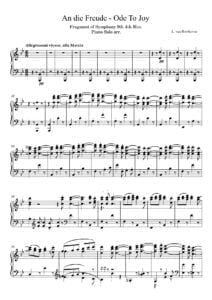 |
|
| Beethoven – Piano concerto 4 (Theme Easy piano solo) |
 |
|
| Beethoven – Piano Concerto 4 (Theme Easy Piano Solo) (Musescore File).mscz | ||
| Beethoven – Piano Concerto No 4 in G Op 58 (arr. for 2 pianos) | Beethoven – Piano Concerto No 4 | |
| Beethoven – Sonata No 23 Op 57 (Appassionata) Piano Solo (Musescore File).mscz | ||
| Beethoven – Sonata No. 8 Op. 13 Pathétique (Musescore File).mscz | ||
| Beethoven – Sonata Pathétique arr. for Guitar (Piano Sonata no. 8 in C minor op. 13 ) | Beethoven – Sonata Pathétique arr. for Guitar (Piano Sonata no. 8 in C minor op. 13 ) | |
| Beethoven – Sonata Pathétique arr. for Guitar (Piano Sonata no. 8 in C minor op. 13 ).mscz | ||
| Beethoven – Sonate Op 111 – Arietta (Liszt) |
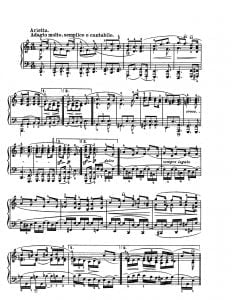 |
|
| Beethoven – Symphony n. 9 D 2H Pauer |
 |
|
| Beethoven – Symphony No. 5 (1st movement) Piano solo arr. |
 |
|
| Beethoven – Symphony No. 7 2nd Movement Piano Solo Arr. | Beethoven – Symphony No. 7 2nd Movement Piano Solo Arr. | |
| Beethoven – Symphony No. 9 3rd movement arr. for piano solo by Ernst Pauer | Beethoven – Symphony No. 9 3rd movement arr. for piano solo by Ernst Pauer | |
| Beethoven 2 cadenzas from Piano Concerto n 4 op 58 (arr. piano solo by Beethoven) | Beethoven 2 cadenzas from Piano Concerto n 4 | |
| BEETHOVEN ADAGIO from Piano Concerto Eb arr. piano solo |
 |
|
| Beethoven Analyse Pathetique | Beethoven Analyse Pathetique | |
| Beethoven by George Alexander Fischer (1905) Book |
 |
|
| Beethoven Duo For 2 Flutes Woo 26 (Musescore File).mscz | ||
| Beethoven Egmont Ouverture Piano solo Arr. Henselt |
 |
|
| Beethoven Egmont Overture Opus 84 Piano Solo arr. sheet music | Egmont Overture Opus 84 Beethoven 1st page | |
| Beethoven Fantasia G Minor Op.77 |
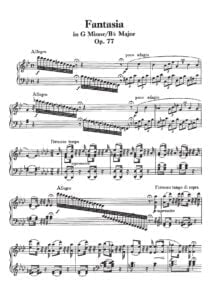 |
|
| Beethoven Fingerpicking For Guitar Solo with TABs |
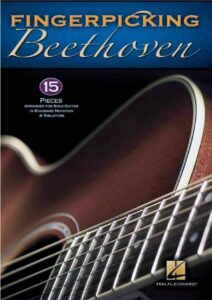 |
Beethoven Fingerpicking For Guitar Solo with TABs |
| Beethoven His Spiritual Development by J.W.N. Sullivan (Book) 1936 |
 |
|
| Beethoven L.V. Op 68 SYMPHONY VI arr. for 2 pianos |
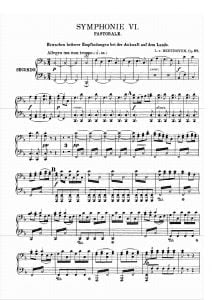 |
|
| Beethoven Leonore Overture No. 3 Piano Solo |
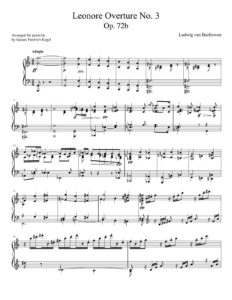 |
|
| Beethoven Leonore Overture No. 3 Piano Solo Musescore File.mscz | ||
| Beethoven Liszt 5th Symphony Piano Solo arr (Complete) |
 |
|
| Beethoven Liszt 5th Symphony Piano Solo arr.mscz | ||
| Beethoven Liszt – Symphony no. 9, 4th Movement Piano Solo arr. |
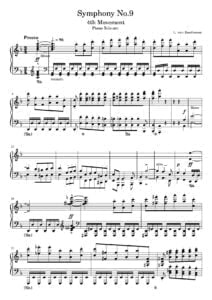 |
|
| Beethoven Liszt – Symphony No.9 4th Movement (Musescore File).mscz | ||
| Beethoven Liszt Marche Funebre |
 |
|
| Beethoven Liszt Symphony No. 9 – 1st Movement (S. 464) Piano Solo arr. | Beethoven_Liszt Symphony No. 9 – 1st Movement (S. 464) – Franz Liszt | |
| Beethoven Liszt Symphony No. 9 – 2nd Movement (S. 464) Piano Solo arr. | Beethoven_Liszt Symphony No. 9 – 2nd Movement (S. 464) – Franz Liszt | |
| Beethoven Moonlight Sonata 3rd Movement Guitar Tabs arr. | Beethoven Moonlight Sonata 3rd Movement Guitar Tabs arr. cover | |
| Beethoven Pastoral Symphony (piano reduction) | Beethoven Pastoral Symphony (piano reduction) | |
| Beethoven Piano Book 10 Musical selections (easy piano) |
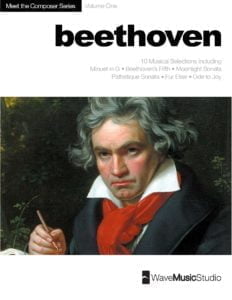 |
Beethoven Piano Book 10 Musical selections |
| Beethoven Piano Concerto 5 Piano Solo Reduction |
 |
|
| Beethoven Piano Concerto No 4 1st Movement (Arr For 2 Pianos) (Musescore File).mscz | ||
| Beethoven Piano Concerto No 4 3rd Mvmt (Arr For 2 Pianos) (Musescore File).mscz | ||
| Beethoven Piano Concerto No 4 Op 58 Piano Solo Reduction |
 |
|
| Beethoven Piano Concerto No 5 (1st Movement) Arr For 2 Pianos (Musescore File).mscz | ||
| Beethoven Piano Concerto No 5 2nd Movement Fragment (Piano Solo) (Musescore File).mscz | ||
| Beethoven Piano Concerto No. 4 1st Movement Arr. For 2 Pianos.mscz | ||
| Beethoven Piano Concerto No. 4 3rd Movement Arr. For 2 Pianos.mscz | ||
| Beethoven Piano Sonata No.17 “tempest” 1st Movt. (Musescore File).mscz | ||
| Beethoven Sonata Op 49 No 2 (Musescore File).mscz | ||
| Beethoven Sonate No 8 “pathétique” Op. 13 1st Movement (Musescore File).mscz | ||
| Beethoven Symphony n.6 F 2H Pauer | ||
| Beethoven Symphony No 5 (1st Movement) Piano Solo (Musescore File).mscz | ||
| Beethoven Symphony No 6 Pastoral (1st Movement) Piano Solo (Musescore File).mscz | ||
| Beethoven Symphony No 6 Pastoral (3rd Movement) Piano Solo (Musescore File).mscz | ||
| Beethoven Symphony No 6 Pastoral (4th Movement) Piano Solo (Musescore File).mscz | ||
| Beethoven Symphony No 6 Pastoral (5th Movement) Piano Solo(1) (Musescore File).mscz | ||
| Beethoven Symphony No 7 (2nd Movement) Piano Solo (Musescore File).mscz | ||
| Beethoven Symphony No 9 (1st Movement) Piano Solo (Musescore File).mscz | ||
| Beethoven Symphony No 9 (2nd Movement-Scherzo) Piano Solo (Musescore File).mscz | ||
| Beethoven Symphony No. 5 (1st Movement) Piano Solo (Musescore File).mscz | ||
| Beethoven Symphony No. 6 Pastoral (2nd Movement) Piano Solo (Musescore File).mscz | ||
| Beethoven Symphony No. 6 Pastoral 2nd Movement (Musescore File).mscz | ||
| Beethoven Symphony No. 7 2nd Movement Piano Solo Arr. (Musescore File).mscz | ||
| Beethoven Symphony No.6 Op.68 piano solo arr. by Liszt |
 |
|
| BEETHOVEN The Complete Variations For Piano Solo |
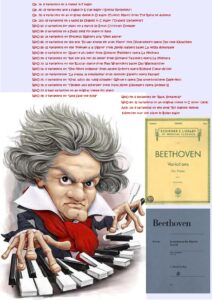 |
BEETHOVEN The Complete Variations For Piano Solo_compressed |
| Beethoven Variations and Fugue in E-flat major (Eroica Variations) Op. 35.mscz | ||
| Beethoven Virus Jazz |
 |
|
| Beethoven_Liszt Symphony No. 9 – 1st Movement (S. 464) – Franz Liszt Piano Solo arr.mscz | ||
| Beethoven_Liszt Symphony No. 9 – 2nd Movement (S. 464) – Franz Liszt Piano Solo arr.mscz | ||
| Beethoven_Symphony_No._9_3rd_movement_for_piano_solo.mscz | ||
| Beethoven- Liszt Symphony no. 6 Pastorale piano solo arr. |
 |
|
| Beethoven-Liszt Symphony 9 Choral (arr. for piano) |
 |
|
| Beethoven-Ludwig-van – Sonaten alle complete Band 1 (1-15) |
 |
|
| Beethoven-Ludwig-Van – Sonaten Alle Complete Band 2 (16-32) |
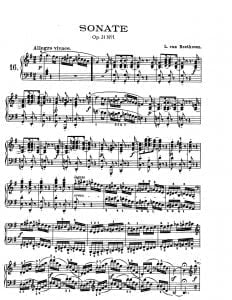 |
|
| Beethoven-Moszkowski – Emperor piano solo Transcription |
 |
|
| Beethoven’s 32 Piano Sonatas A Handbook For Performers (BOOK) |
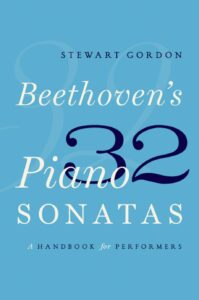 |
|
| Beethoven’s Arrangements For Solo Piano Of The 9 Symphonies By E. Pauer |
 |
|
| Beethoven’s Last Piano Sonatas, Piano Sonata In A Major, Op. 101 An Edition With Elucidation, Volume 4 |
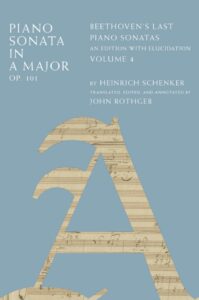 |
|
| Beethoven’s Last Piano Sonatas, Piano Sonata In E Major, Op. 109 An Edition With Elucidation, Volume 1 |
 |
|
| Beetlejuice – Obituaries – Danny Elfman | Beetlejuice – Obituaries – Danny Elfman | |
| Beetlejuice Theme – Danny Elfman |
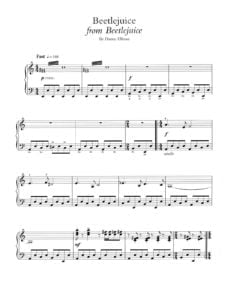 |
|
| Beetoven – Klaviersonate Nr. 14 Mondscheinsonate (Piano Sonata No. 14 Moonlight) 3rd Mov. (Musescore File).mscz | ||
| Beginning Gospel For Piano Easy Piano |
 |
Beginning Gospel For Piano Easy Piano |
| Beginning Jazz Guitar The Complete Jazz Guitar Method by Jody Fisher (with audio MP3 audio tracks and Tablature) |
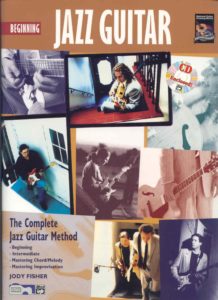 |
Beginning Jazz Guitar |
| Beginning Solo Guitar Merry Christmas with Tablature |
 |
Beginning Solo Guitar Merry Christmas |
| Béla Bartók Romanian Folk Dances Sz. 56 Piano Solo Sheet Music |
 |
|
| Bela Bartok – Music For Strings, Percussion And Celesta Sz. 106 (Piano Transcription) | Bela Bartok – Music For Strings, Percussion And Celesta Sz. 106 (Piano Transcription) | |
| Béla Bartók An Analysis Of His Music (Book) By Ernö Lendvai |
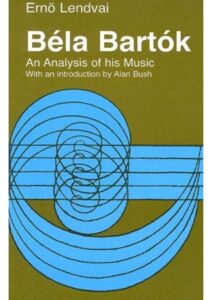 |
|
| Bella Ciao – As Performed In La Casa De Papel (Traditional Italian Anti-Fascist Song) (Musescore File).mscz | ||
| Bella Ciao (As performed in La Casa de Papel – Money Heist) Traditional Italian song (Anti-fascist) | Bella Ciao | |
| Bella Ciao Ukulele with Tablature TABs | Bella Ciao Ukulele with Tablature TABs | |
| Bella gioventù (Renato Zero) | ||
| Bella’s Lullaby (Carter Burwell) | ||
| Belle OST – A Million Miles Away by Rachel Portman |
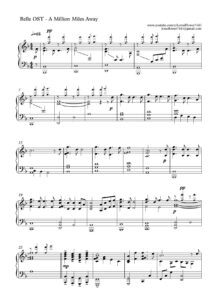 |
|
| Bellini Casta Diva (piano) | Bellini-CastaDiva | |
| Bellini – Casta diva (Norma) Easy Piano Solo arr. |
 |
|
| Bellini – Casta Diva (Norma) Easy Piano Solo Arr. (Musescore File).mscz | ||
| Bellini – Norma Casta Diva arr. piano solo |
 |
|
| Beltrami, Marco – The Giver – Rosemary’s Piano |
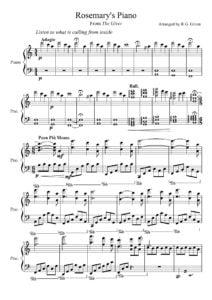 |
|
| Ben (Michael Jackson) | ||
| Ben E King – Stand By Me | ||
| Ben Folds – Annie Waits | ||
| Ben Folds – Brick | ||
| Ben Folds – Carrying Cathy | ||
| Ben Folds – Effington (Solo) |
 |
|
| Ben Folds – Fired | ||
| Ben Folds – Gone | ||
| Ben Folds – Losing Lisa | ||
| Ben Folds – Not The Same | ||
| Ben Folds – Rockin The Suburbs | ||
| Ben Folds – Still Fighting It | ||
| Ben Folds – The Luckiest | ||
| Ben Folds – Zak And Sara | ||
| Ben Harper – Fight For Your Mind (Songbook) (Ben Harper) Guitar TABs |
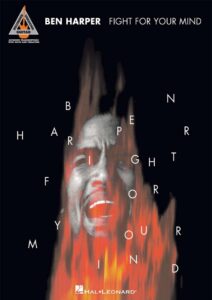 |
Ben Harper – Fight For Your Mind (Songbook) (Ben Harper) Guitar TABs |
| Ben Webster – Better Go The Quintet Studio Sessions |
 |
|
| Ben Webster – Solo on Solitude By Duke Ellington | Ben Webster – Solitude By Duke Ellington | |
| Ben Webster – Someone to Watch Over Me The Life and Music of Ben Webster (Jazz Perspectives) (Frank Buchmann-Moller) Book |
 |
|
| Ben Webster Stormy Weather – (solo Tenor Sax)I Cant Get Started | Ben Webster Stormy Weather – (solo Tenor Sax)I Cant Get Started | |
| Benjamin Waldmann Circles |
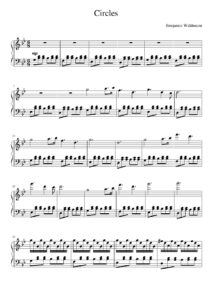 |
|
| Benny Carter Vol 87 – When Lights Are Low – Play Along with MP3 audio tracks |
 |
Benny Carter Vol 87 – When Lights Are Low – Play Along with MP3 audio tracks |
| Benny Golson Stablemates (Lead Sheet) | Stablemates (Lead Sheet) sample |
